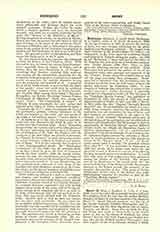

Henriquez, ENRIQUE, a noted Jesuit theologian, b. at Oporto, 1536; d. at Tivoli, January 28, 1608. At the age of sixteen, in 1552, he entered the Society of Jesus, and soon became celebrated for his philosophical and theological erudition. He taught both these branches in the Jesuit colleges of Cordova and Salamanca; in the latter place he numbered Suarez and Gregory of Valencia among his pupils. In 1593 he left the Society of Jesus and entered the Order of St. Dominic, but soon returned to his former companions. Father Alcazar (Hist. Prov. Tolet., I, 204) gives the following account of this incident. After Henriquez had printed in the preface of one of his theological works some passages not approved of by the “censors”, Father Aquaviva ordered him to tear out the page containing these paragraphs. Henriquez felt so disturbed over this punishment that he obtained permission from the holy father to leave the society and enter the Dominican Order. It was Gregory of Valencia who advised him to return to his former associates. Father Henriquez is especially noted for two theological works: (I) The first part of his “Theologiae Moralis Summa” was published at Salamanca in 1591, the second in 1593; the work appeared again at Venice, in 1597, and 1600; at Mentz, in 1613, under the title “Summae Theologiae Moralis libri XV”, etc. It was forbidden by decree of August 7, 1603, donec corrigatur, because the author allowed confession (but not absolution) by way of letter, and held opinions too unfavorable to the rights of the Church. In his “Summa” Henriquez treats only of the end of man, of the sacraments, and of ecclesiastical censures and irregularities; but he manages to find an opportunity of declaring himself against Molina’s scientia media; he defends the Dominican theory of physical predetermination, and of a predestination antecedent to the Divine foresight of our future merits. St. Alphonsus highly esteems the authority of Henriquez on moral questions, an opinion fully shared by Doujat in his “Praenot. canon.”, V, xv. (2) Henriquez’s second work is entitled “De pontificis romani clave, libri IV”. It was published at Salamanca in 1593, but nearly all its copies were burnt by the Apostolic nuncio of Madrid on account of its allowing the king too much power over ecclesiastics. It is said that only three or four copies have been preserved among the rarities of the Escorial. The subjects treated by Henriquez in his second work are: the power and election of the Roman pontiff; the censures reserved to the Roman pontiff; the authority of the councils; the question of law. The rarity of Father Henriquez’s second work is the reason why some bibliographers consider its treatises as part of his “Theologiae Moralis Summa”.
A. J. MAAS

